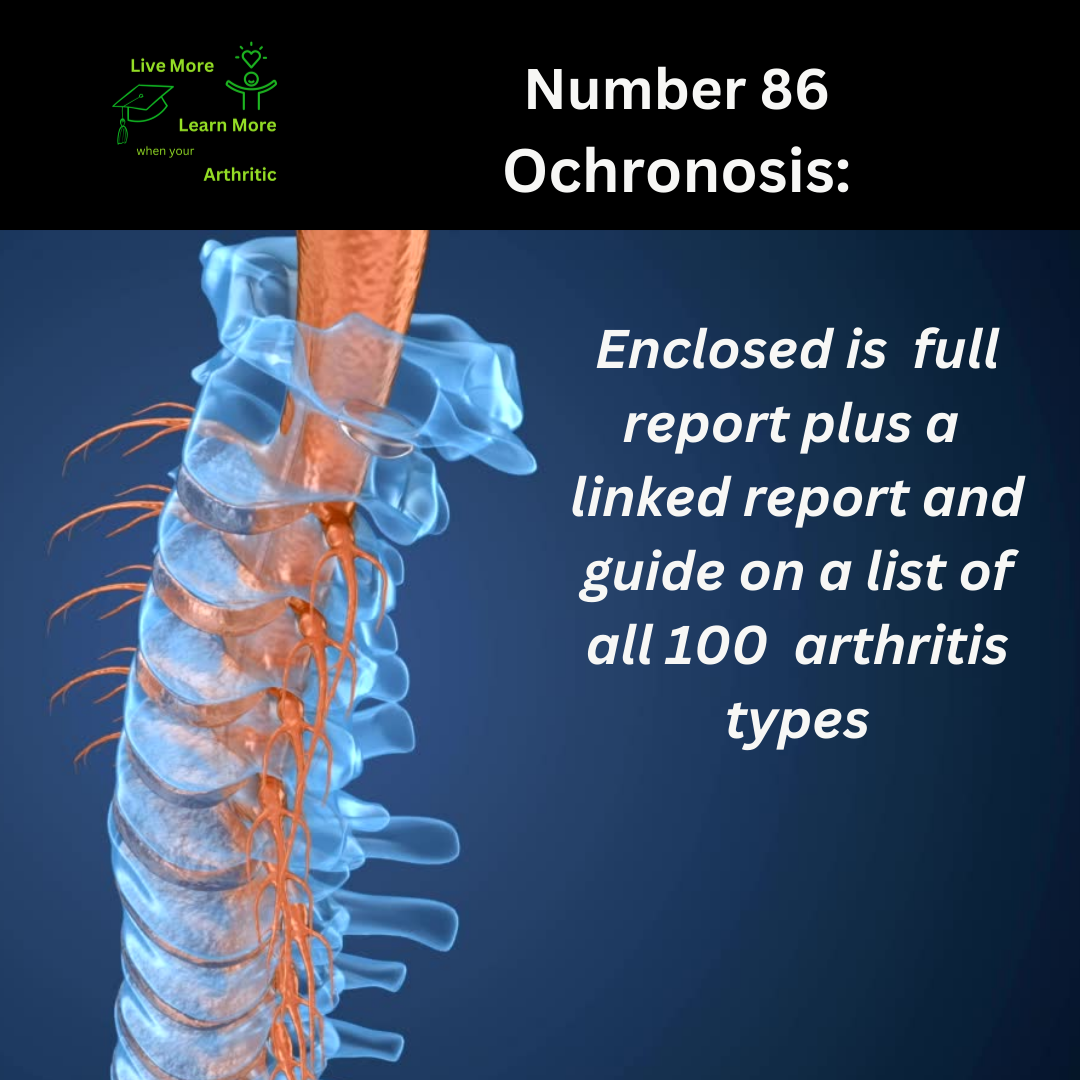
Ochronosis: Number 86 on the list of 100 types of Arthritis
Understanding Ochronosis: Unveiling the Mysteries of a Rare Condition
Ochronosis is a rare metabolic disorder that can have profound effects on individuals diagnosed with it. This condition, characterized by the accumulation of homogentisic acid in connective tissues, presents unique challenges that require a comprehensive understanding and approach to management and care.
 Nature of Remission and Disease Description
Nature of Remission and Disease Description
Ochronosis does not typically go into remission in the traditional sense. The progressive accumulation of homogentisic acid leads to irreversible changes in tissues, including cartilage and skin. The condition manifests with darkening of skin and connective tissues, joint stiffness, and limited range of motion due to cartilage degeneration.
Causes, Triggers, and Symptoms
Ochronosis is caused by a genetic defect that results in impaired metabolism of tyrosine, leading to the accumulation of homogentisic acid. While the condition is primarily genetic, certain triggers such as joint injuries or surgeries can exacerbate symptoms. Common symptoms include joint pain, stiffness, skin pigmentation changes, and in severe cases, cardiovascular complications due to deposition of pigment in heart valves.
Onset and Lifespan Impact
The age of onset for Ochronosis can vary, but symptoms often become noticeable in adulthood. The condition progressively worsens over time, impacting joint function and mobility. While Ochronosis does not directly shorten lifespan, complications such as cardiovascular issues can affect overall health outcomes.
Quality of Life with a Proactive Approach
A proactive approach to managing Ochronosis involves focusing on symptom management and preserving joint function. This may include physical therapy, joint protection techniques, and lifestyle modifications such as maintaining a healthy weight and avoiding high-impact activities. While the condition cannot be cured, proactive management can significantly improve quality of life and slow disease progression.
Possible Complications of Ochronosis
Complications of Ochronosis can include severe joint degeneration leading to disability, cardiovascular complications such as valve disease or heart failure, and kidney damage due to pigment deposition. These complications underscore the importance of comprehensive medical care and ongoing monitoring for individuals with Ochronosis.
Epidemiology and Gender Disparities
Ochronosis affects both men and women, although certain studies suggest a slightly higher prevalence in males. The condition is rare, affecting individuals with a specific genetic mutation that impairs tyrosine metabolism.
 Interconnected Diseases and Conditions
Interconnected Diseases and Conditions
Individuals with Ochronosis may have comorbidities such as osteoarthritis, cardiovascular disease, or kidney dysfunction. These conditions can be interconnected due to the systemic effects of homogentisic acid deposition, highlighting the need for integrated care and management strategies.
In conclusion, Ochronosis is a complex disorder that requires a multidisciplinary approach to care. While the condition presents challenges, individuals can achieve a higher quality of life through proactive management strategies aimed at preserving joint function, managing symptoms, and preventing complications. Continued research and advancements in treatment options are essential for improving outcomes and empowering those living with Ochronosis to navigate their journey with resilience and hope.

